This discussion of paranoia and horror contains spoilers for season 1 of Yellowjackets on Showtime.
Over the course of its first season, Yellowjackets quickly became one of the buzziest shows on television. Part of this is simply because this survival horror is an exceptionally crafted piece of entertainment, with a charismatic cast and a stinging sense of humor. However, there’s something in Yellowjackets that seems to speak to, and resonate with, the current moment.
The plot of Yellowjackets is primarily split across two time periods. The first story thread follows the eponymous girls’ soccer team as a plane crash strands them in the wilderness for 19 months in 1996. The other major plot thread rejoins four survivors of the crash in the present day, a quarter of a century removed from the ordeal that scarred them. The opening episode makes it clear that terrible things happened in the wild, that the girls turned on (and even ate) one another.
Yellowjackets is a paranoid show. It is driven by questions. The series has developed an eager online following devoted to figuring out the show’s secrets. Yellowjackets leans into this, its first season setting up any number of mysteries. What happened to the other survivors of the crash between then and now? Who were the mysterious figures glimpsed in the first episode, their faces hidden behind ceremonial dress? Who is blackmailing the survivors in the present, threatening to reveal their secrets to the world?
One of the default points of comparison for Yellowjackets has been Lost, one of the defining television shows of the 21st century. It is easy to understand why. Both are shows about a large ensemble surviving a plane crash in a remote location, saturated with possible supernatural mysteries and shifting through time. However, perhaps the most revealing thing about Yellowjackets is how the show differs from Lost and what that says about the show’s contemporary resonance.
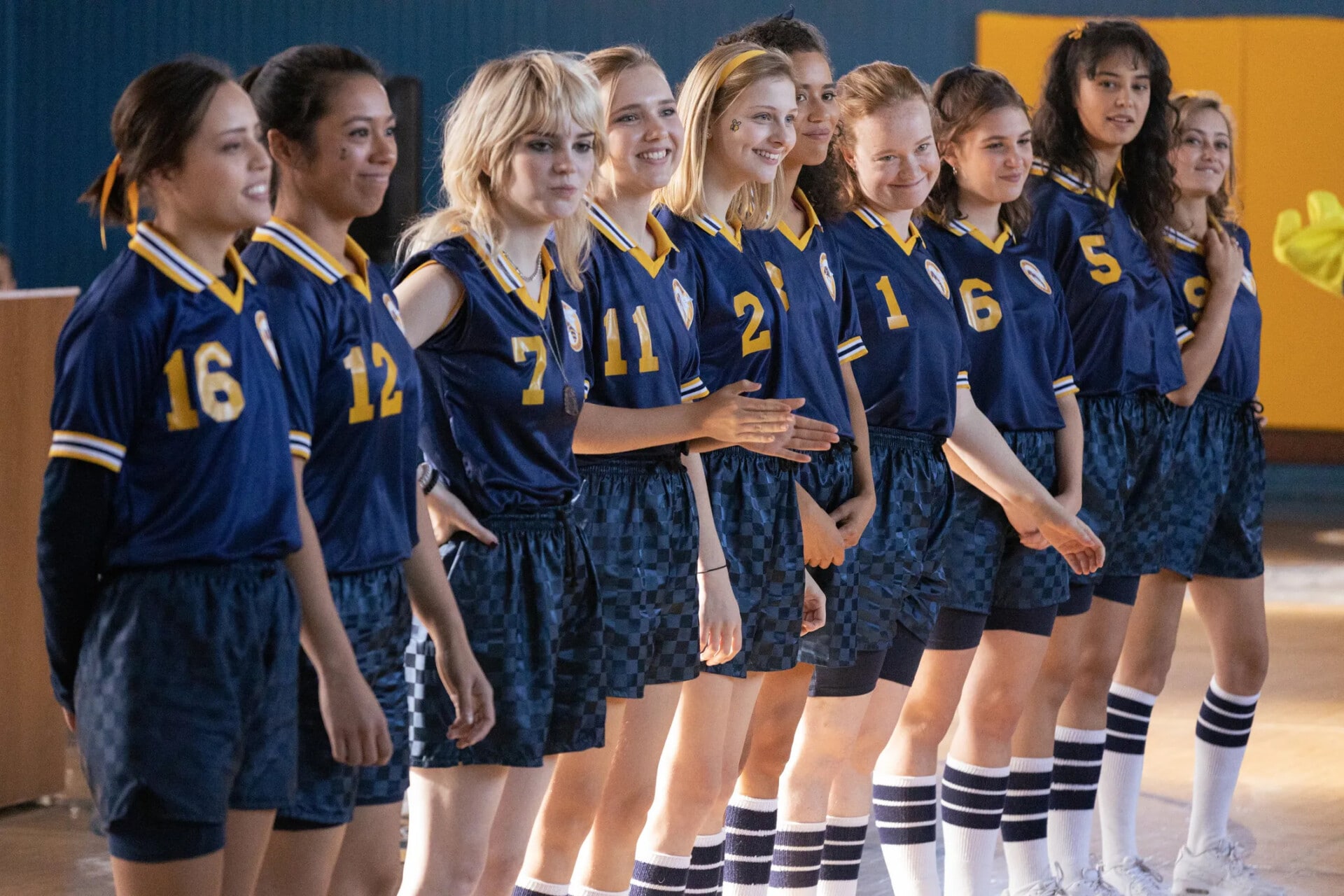
Yellowjackets plays like a rejection of the “mystery box” plotting popularized by Lost. The first season does a nice job of tidying up after itself, resolving most of its driving questions by the finale. Critic Caroline Framke noted that, when it comes to resolving its mysteries, “the show reveals most of the answers to be the most obvious.” Co-showrunner Jonathan Lisco insists the show is not trying to mislead audiences, stating, “I think sometimes you should take what we do on face value.”
While Yellowjackets is paranoid, it is not conspiratorial. The show invites its audience to question reality and to theorize about what is really going on, but only to situate the audience in the headspace of its central characters. Over the first season, survivor Shauna (Melanie Lynskey) gets into a car accident with a younger man named Adam (Peter Gadiot). Adam pursues Shauna, and the two wind up bumping into one another by chance. They begin a torrid affair.
Throughout the first season, Shauna is plagued by doubts that Adam is not who he appears to be. She begins to suspect that this seemingly charming man is too good to be true. Her daughter, Callie (Sarah Desjardins), points out that Adam has no internet footprint. “Why can’t I find him?” Callie demands. “Everything is on the internet — except your boyfriend.” At one point, Shauna catches him in a lie about attending the Pratt Institute.
Yellowjackets invites the audience to share Shauna’s paranoia. Is Adam the blackmailer? Was the car accident staged? Was it really a coincidence that they bumped into one another that second time? At the start of the season’s penultimate episode, Shauna confronts Adam in his apartment. He refuses to confess. She stabs him, killing him. Returning home, she discovers the true identity of the blackmailer: her husband Jeff (Warren Kole), trying to cover the business debts of his furniture store.
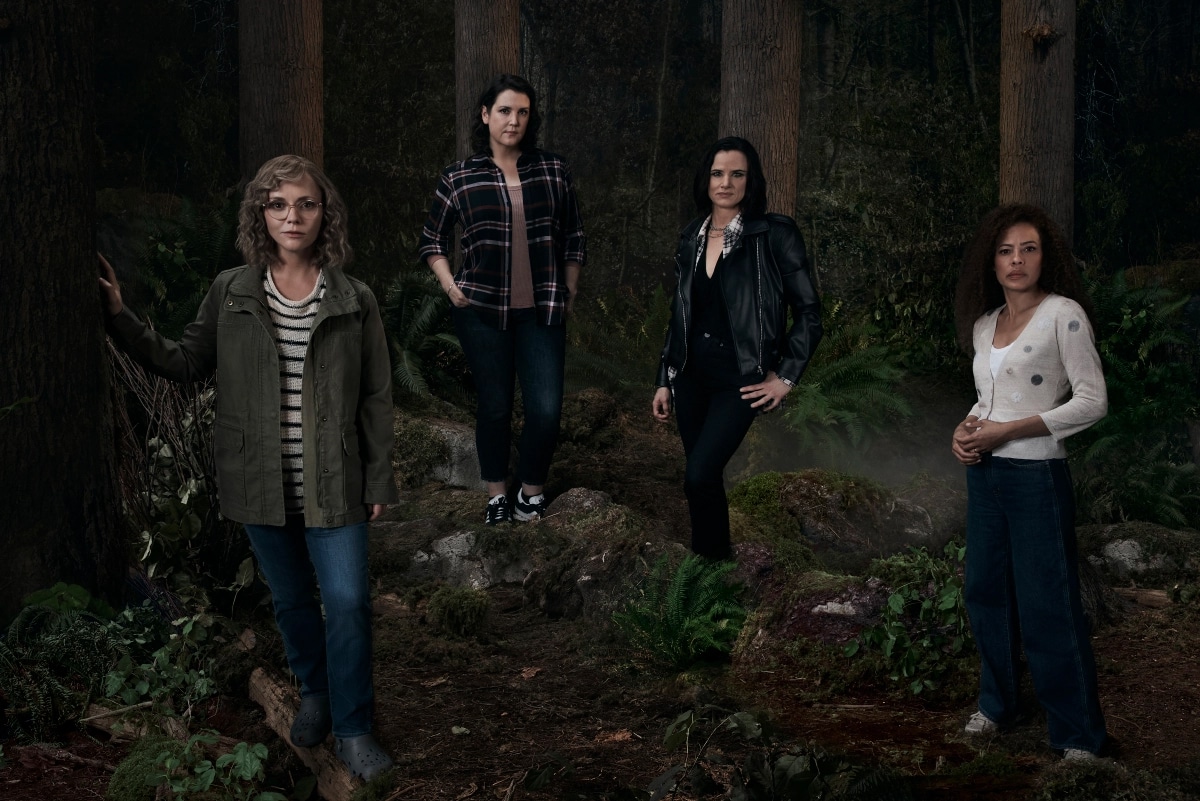
The implication is clear. Adam was just a nice guy. His meeting with Shauna was just one of those coincidences. His off-hand deception about his education was a stupid white lie. As co-showrunner Bart Nickerson explained, “The hope was to make the audience somewhat complicit in his murder, because that paranoia is one of the outgrowths of Shauna’s trauma, and the way she sees the world right now was the subjective experience we were after.”
Most of the characters in Yellowjackets are looking for answers of one kind or another. Shauna is prompted to reconnect with fellow survivor Taissa (Tawny Cypress) when Jessica (Rekha Sharma) shows up, claiming to be an investigative reporter picking at the narrative. When Shauna convinces the group that the deceased Adam was the blackmailer, Nat (Juliette Lewis) laments, “I can’t believe you killed him, Shauna. Now we’re not going to know anything.” She adds, “I needed answers!”
Even the show’s basic structure rejects the idea of easy answers. After all, the fact that half the show is about the characters who have returned from the wilderness undermines any sense of suspense as a driving force in the narrative. The survivors already know what happened, because they lived through it. Instead, these characters are trying to make sense of it all. Yellowjackets seems to understand that this may not be possible. There may not be definitive, easy answers.
This all gets at the contemporary resonance of the show. The flashbacks in Yellowjackets take place in 1996, the middle of a paranoid decade. The X-Files was one of the biggest shows on television. It made conspiracy theories fun and even sexy, imagining a world where a shadowy government cabal picked the Oscar and Super Bowl winners. The 1990s were a different time, one of relative peace and prosperity for the United States. Paranoia was a sort of escapism — ironic counterprogramming.
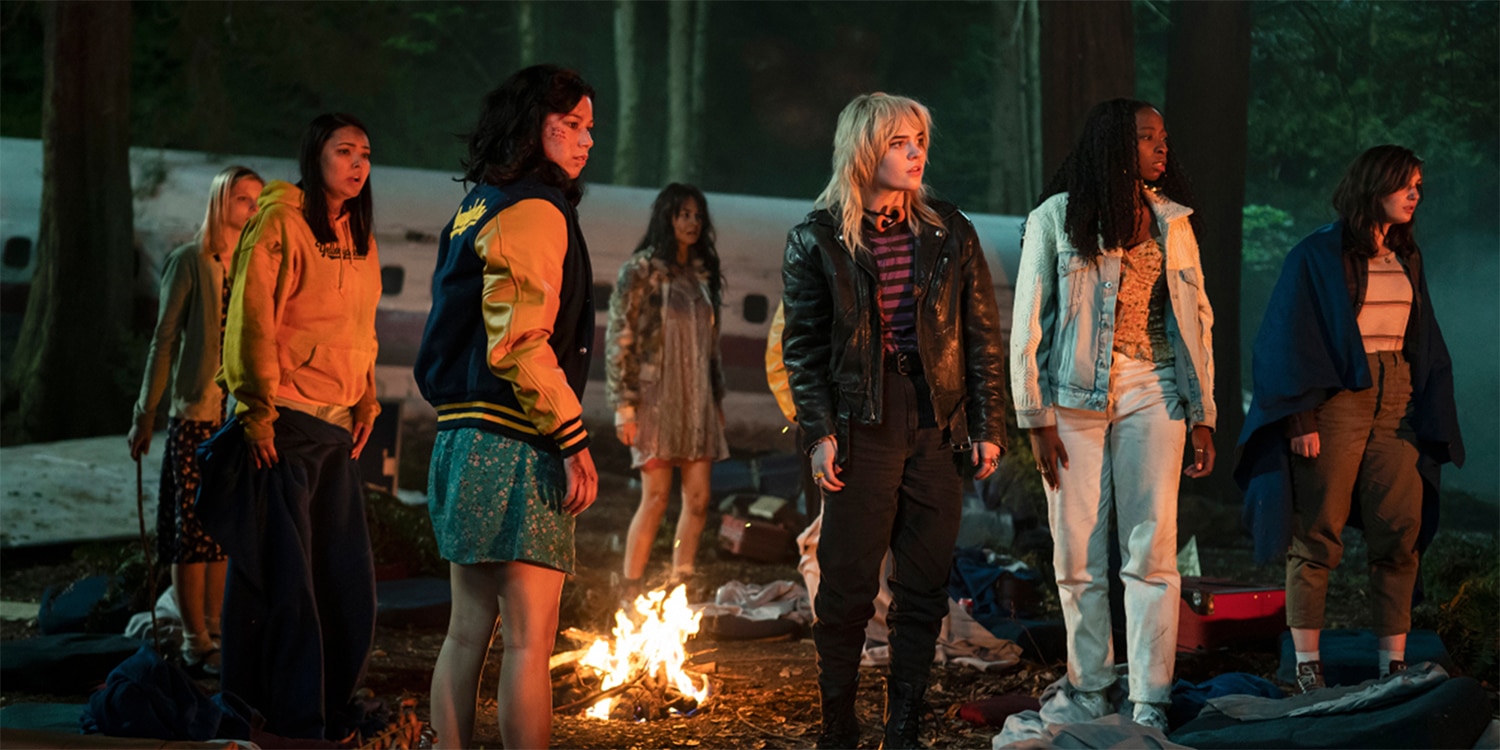
Times have changed. Paranoia is a lot more unsettling today. As Emily VanDerWerff noted in her assessment of this push away from “mystery box” storytelling, “Conspiracy theories in the real world have too often become a coping mechanism for those who feel powerless in the face of problems that seem insurmountable.” Yellowjackets understands that, while the questions are unsettling, the answers people provide to fill in the gaps can be even more horrifying.
Once the girls find themselves stranded in the wilderness, the social order breaks down. The team captain, Jackie (Ella Purnell), quickly discovers that she has no social currency in the wild. “Don’t you understand?” Lottie (Courtney Eaton) taunts. “You don’t matter anymore.” Similarly, the lone adult survivor, Coach Scott (Steven Krueger), quickly discovers that he holds little authority when he attempts and fails to overrule a dangerous escape attempt by Laura Lee (Jane Widdop).
Trapped in the darkness, the group pushes away from rationality. They discover strange markings on the trees and in an old cabin. Jackie organizes a séance, at which Lottie begins speaking in tongues. At a party, outsider Misty (Samantha Hanratty) doses the group with mushrooms, and they descend into a shared delusion. After a series of disasters, Van (Liv Hewson) begins to wonder if there’s something keeping them in the woods. Lottie and her delusions come to hold increasing sway over the group.
Yellowjackets is deliberately ambiguous as to whether anything truly supernatural is afoot, with co-showrunner Ashley Lyle discussing it as “a Rorschach test.” The show is clear that Lottie (and some of the other girls) believe these irrational things are happening for a reason. Lottie even lets Laura Lee baptize her, embracing religion. The season is bookended by sequences suggesting that, under Lottie’s influence, the girls in the wilderness have embraced a sort of New Age paganism.

Lyle concedes, “We are very much interested in exploring the theme and concept of belief and what that means for us in terms of our worldview — the way that we interact with the world around us, the way that we interact with other people, and forge those relationships.” Nickerson acknowledges, “One of the stories that we’re obviously telling in both the present day and the 1996 story is the emergence of this religiosity.”
It is harrowing to watch these young women get caught up in a violent collective delusion when it increasingly seems like much of the American population has done the same. The Capitol Riots have been described as a “mass social psychosis.” There are arguably even echoes to be found in the co-opting of paganism by the QAnon movement, with Lottie’s “Antler Queen” evoking like the infamous “QAnon Shaman.” Yellowjackets even ties this religious fervor to politics, with Taissa sacrificing a family dog in a blood ritual on the eve of her Senate victory.
This blending of paranoia with religious fervor taps into a very modern anxiety. Adrienne LaFrance has argued that “To look at QAnon is to see not just a conspiracy theory but the birth of a new religion.” It should be noted that the pilot of Yellowjackets was shot in late 2019, although the season itself was shot in May 2021. It is entirely possible that these resonances are accidental. It is also possible that the writing team leaned into them while scripting the final nine episodes.
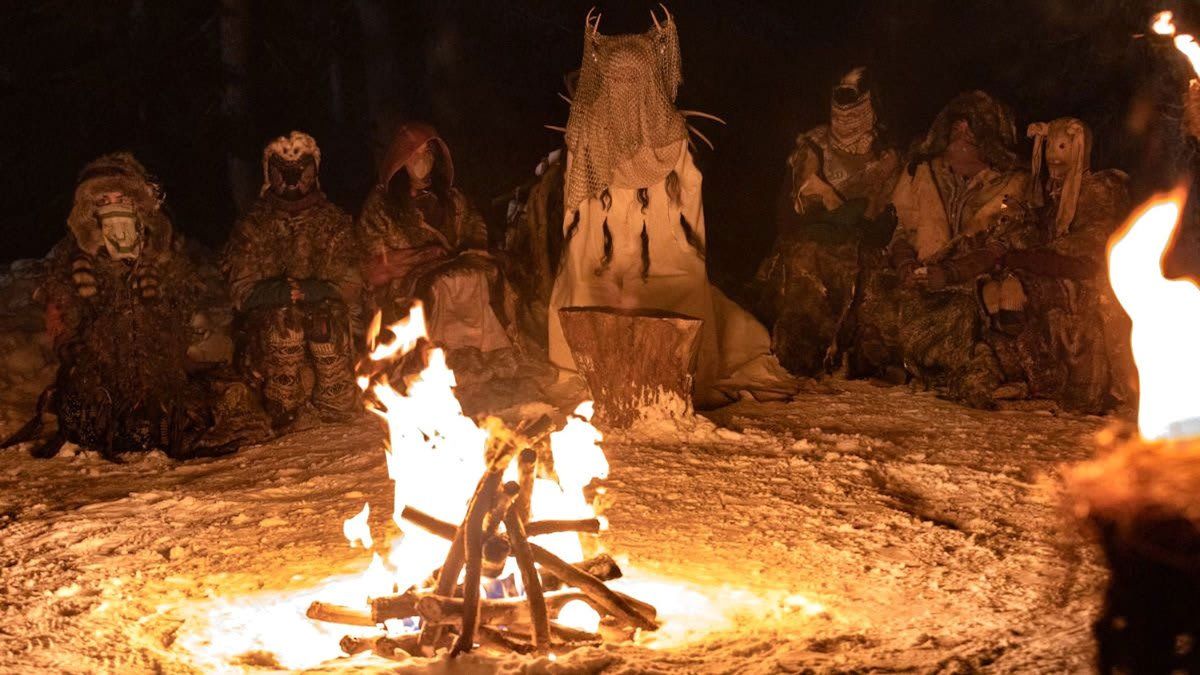
More fundamentally, the trauma at the heart of Yellowjackets speaks to the moment. It’s hard not to empathize with the girls trapped in the woods, watching the world that they thought they knew collapse. After all, polling suggests that modern society is even more divided than it was before the pandemic. Like the fictional sports team, the audience watching at home is also living through a seismic event that has “disrupted modern society on a scale that most living people have never witnessed.”
“Trauma” is thrown around as a buzzword for horror sequels and television spin-offs, but Yellowjackets is actually about trauma. “Things happen in life,” Shauna tells her daughter. “I’m fine.” Callie responds, “No, Mom, but you’re not. You’re not fine.” Viewers can understand. The Washington Post reported on a study of five Western countries, published in January 2021, that found 13% of people reported symptoms of post-traumatic stress disorder related to the pandemic.
David Trickey, a psychologist and representative of the UK Trauma Council, describes trauma as a rupture in “meaning-making.” Yellowjackets is the rare show that meaningfully understands this – and that the horror of those trying to impose meaning on that rupture can bring a trauma all of its own.

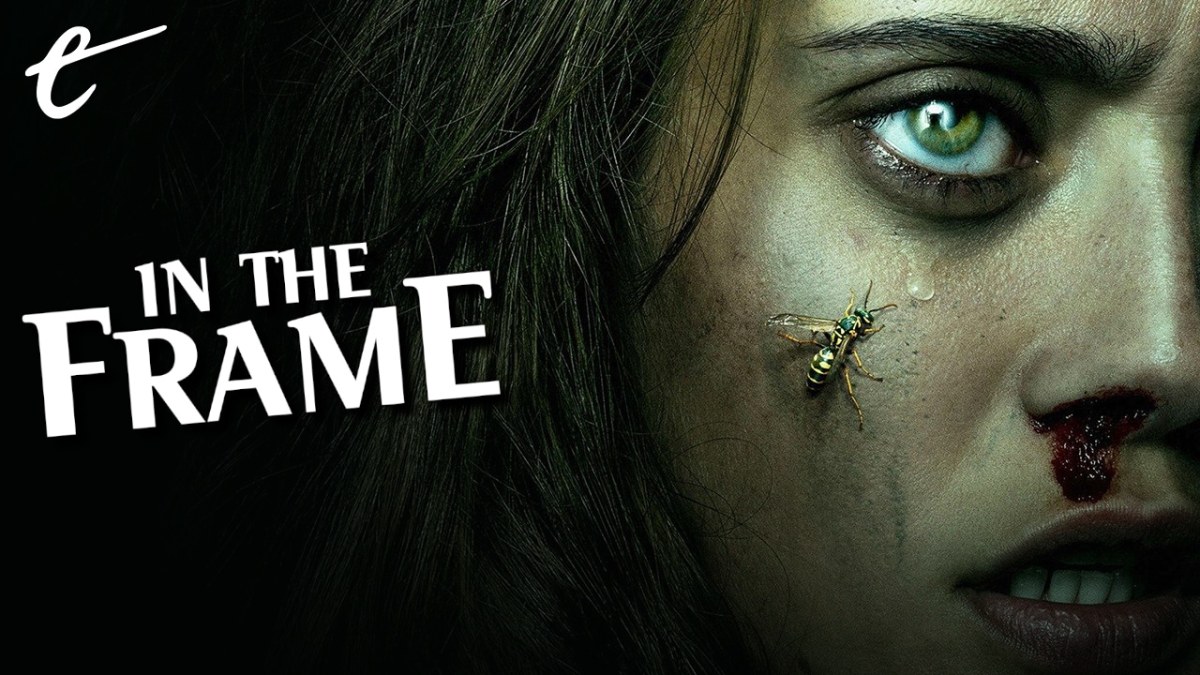




Published: Jan 21, 2022 11:00 am